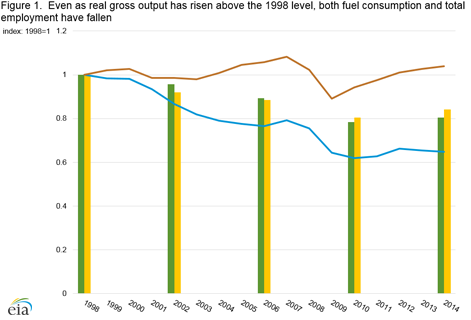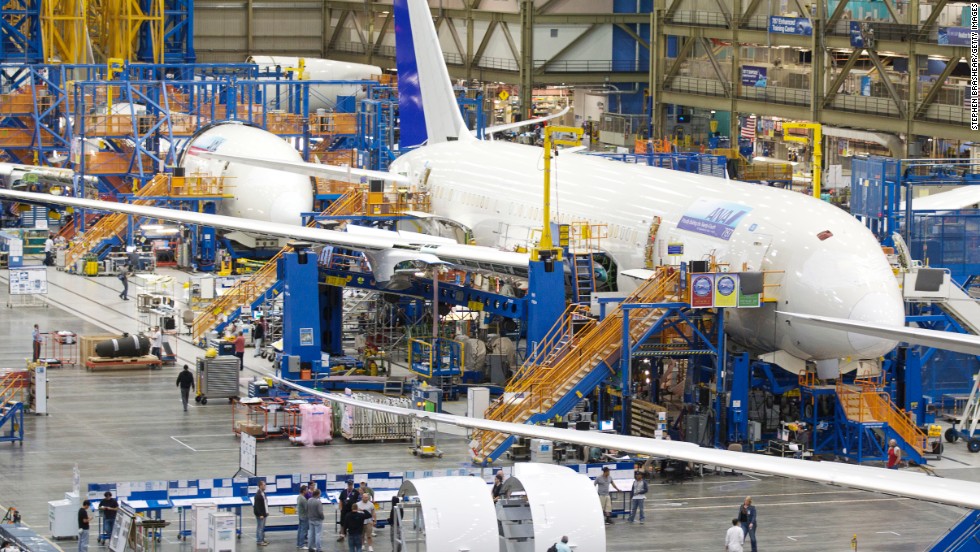Examine This Report about Industrial Manufacturing Machinery
We oppose a heavy-handed commercial policy that calls for the federal government to try to pick winners. Federal governments do a lousy job of playing lender or investor, as shown by the recent brouhaha over federal and state loans and aids to solar-panel business that then failed or closed some U.S

. As soon as crucial abilities have migrated, trying to prop up domestic companies through subsidies or other targeted assistance is not an option. Consider the circumstance in solar photovoltaics. American solar PV firms argue (correctly) that their Chinese competitors have an unjust advantage due to the fact that of subsidies from the Chinese government. But Chinese competitors have another edge: Solar PV shares much of its innovation facilities and supply chain with the electronics market, which is now centered in Asia.


While we oppose targeted commercial policies, we do think that federal government has an essential role to play in supporting innovation, including development related to manufacturing. Here are two policy techniques that history suggests will be productive: In the past, government funding of fundamental and applied research has actually helped considerably strengthen the country's foundations of innovation.

These initiatives prepared for the web, electronic design automation, advanced computer system graphics, the surge in farming efficiency, and the revolution in genetics-based drug discovery. The government has likewise played a significant role in financing the advancement of important production technologies. Today most sophisticated jet engines employ mystical metals and ceramics capable of running under extreme heat and pressure.
Much of the science underlying the processes used to make them was generated by government-funded fundamental research in metallurgy in the 1960s. But over the previous 20 years, funding for metallurgical research study-- and for other process-related sciences-- has actually mainly dried up. The deep integration of product-design and production procedures can really position a significant barrier to entry for beginners.
That would be a good initial step towards redressing the deficiency in research funding for manufacturing-related science. And even $1 billion a year is reasonably modest when compared with the federal government's overall annual R&D spending plan of $143 billion or the $31 billion NIH budget plan. (Obviously, in today's budgetary environment the possibility that the council's recommendation will be adopted is low.) Private-sector R&D is generally most efficient when focused on issues directly related to a company's specific markets, consumers, or making processes.
But business are not well placed to buy fundamental or applied research. The benefits are too far in the future and too scattered. Unless the federal government takes the lead, a U.S. manufacturing renaissance is unlikely. A full-blown exposition of tax and regulatory policies is well beyond the space limits of this short article, however it's clear that high business tax rates and complex, ever-changing guidelines dissuade financial investment in U.S.
The Best Guide To Industrial Manufacturing Process
Beyond getting the essentials right in those locations, the most essential method government can encourage domestic manufacturing may be by supporting training. We've heard the same avoid many executives we have actually talked with: "We would enjoy to do more production in the U.S., but we can't find individuals with the ideal technical abilities." Tool and die makers, upkeep specialists, operators capable of working with highly sophisticated computer-controlled devices, experienced welders, and even production engineers are in short supply.
As making plants closed or scaled back, lots of people in those professions proceeded to other things or retired. Seeing less task potential customers down the roadway, young people chose other professions. And lots of community and professional schools, starved of trainees, downsized their technical programs. Government policy makers have a mind-set that production is a good sector for people with less education and less training.
That needs to change. In a global economy where knowledge and abilities drive growth, competitive benefit is formed by both managers and policy makers. The concept that the United States and other advanced countries are not expected to be proficient at production has no basis in any theory and no empirical proof to support it.

The United States has been conducting a multidecade experiment testing the hypothesis that it can prosper as a post-industrial economy. American magnate and policy makers need to desert that experiment now-- before it's far too late. A version of this article appeared in the March 2012 issue of Harvard Business Review.
Some food for thought: the U.S. had as numerous people working in the production sector in December as it did 69 years ago. The 32,000 positions included in December took the overall variety of positions in making to 12.84 million. In November 1949, there were 12.88 million manufacturing workers, at the end of a sharp economic downturn.

in 2019 in another way. Then, some 30% of American civilian workers outside the farm sector remained in manufacturing; now, that portion stands at simply 8.5%, about as low as it's ever been. The burrowing of America's commercial base, and the loss of the highly paid jobs for the high-school informed that accompanied them, goes some way to reflect the tectonic shifts in U.S
. In 2015, 264,000 brand-new production tasks were added, representing the highest variety of brand-new employees given that 1988. As a percent of the overall labor force, production rose for the very first time considering that 1984. The White House has actually not been shy about taking credit, and it's framing current trade settlements with China as a method of further increasing those numbers.
How Industrial Manufacturing Machinery can Save You Time, Stress, and Money.
Bernard Baumohl, chief global financial expert for The Economic Outlook Group in Princeton, N.J., stated 2 significant things are occurring-- one, companies are deciding to hire workers instead of increase capital expenditure, and two, the White House is actively attempting to interrupt international supply chains. Baumohl stated companies have concerned the conclusion that the likely 3% development the U.S.
" Workers are seen more like stock," he says. "If you need them, you can hire them, and if the economy truly turns south, you can let them go." "CEO have taken a very sensible approach," he said. Additionally, business currently are bring a record amount of financial obligation, all at a time when rates of interest are rising.
look at here now visit their website get more